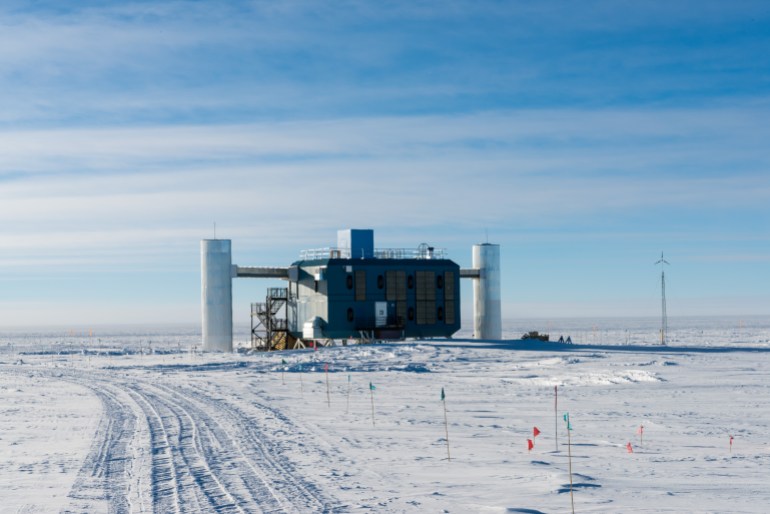Scientists are one step closer to solving a 100-year-old mystery about cosmic rays, and astrophysics researchers are seeking to understand the source of charged particles that travel at nearly the speed of light and bombard the Earth.
In his report, published by the British newspaper "The Independent", writer Adam Smith said that these particles are incredibly difficult to track, and the magnetic fields of the galaxy can deviate from them as they travel through space due to their charge, and this makes it impossible for them to know where they came from. .
However, according to the author, another type of particle, called neutrinos, can solve this mystery. Neutrinos are neutral particles produced by cosmic rays and can help determine their source;
Its mass is very low and it does not interact with matter.
Scientists use the ice cube experiment at the Antarctic Neutrino Observatory (Shutterstock)
Searching for quasars
The writer shows that one of these neutrinos was found in 2017, and scientists used the ice cube experiment at the IceCube Neutrino Observatory, deep in the South Pole, to track the particles to a quasar (blazar) called "TXS 0506+056".
Using the data obtained by the IceCube observatory along with a group of what scientists believe are quasars, Associate Professor Marco Ajello, from Clemson University in the United States, sees that they have found a subset of quasars that emit these neutrinos, and they say The chance of that being a coincidence is less than one in a million, Professor Ajello explains. "We got some hints back then (in 2017), and now we have evidence."
"The results provide for the first time documented, indisputable evidence that the sub-sample of PeVatron blazars are extragalactic neutrino sources," added Sarah Bosson of Julius-Maximilians-Universität in Bavaria, Germany. They act as cosmic ray accelerators.
The writer stated that researchers believe that the discovery of these neutrinos is a major milestone in astrophysics, and the study of fake stars will be able to help scientists discover what makes them good accelerators;
Understanding other cosmic "messengers", such as cosmic rays, neutrinos and gravitational waves, will give astrophysicists a greater basis for studying the universe than simply using light.

